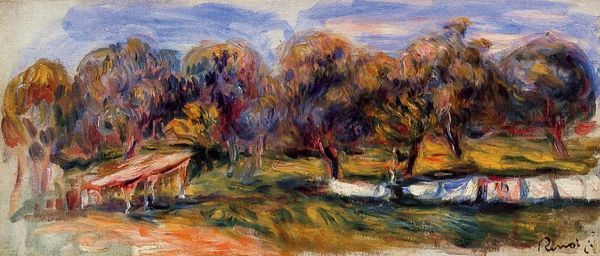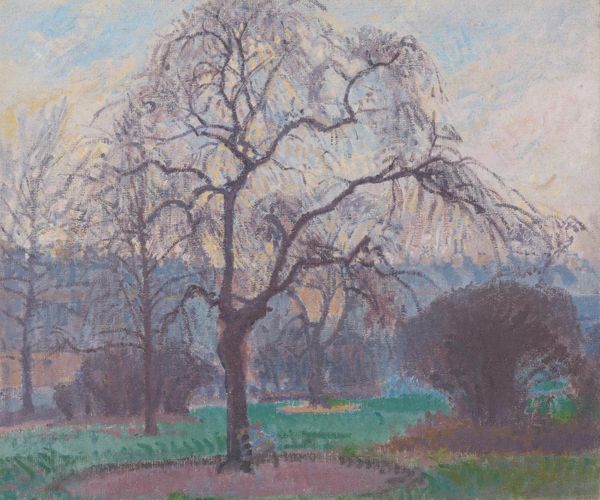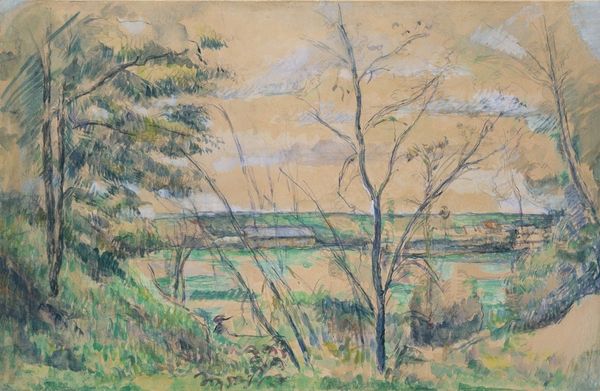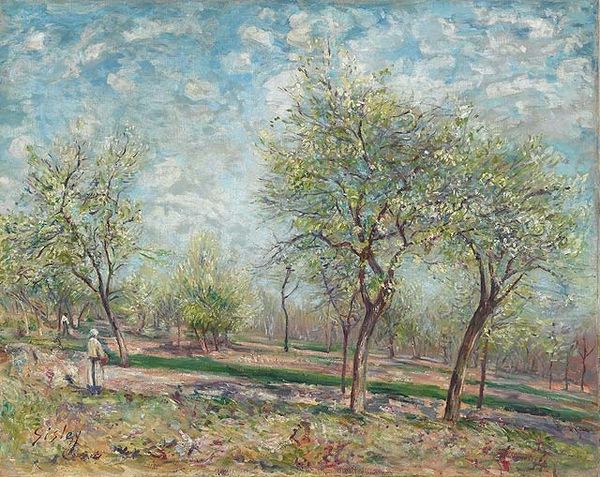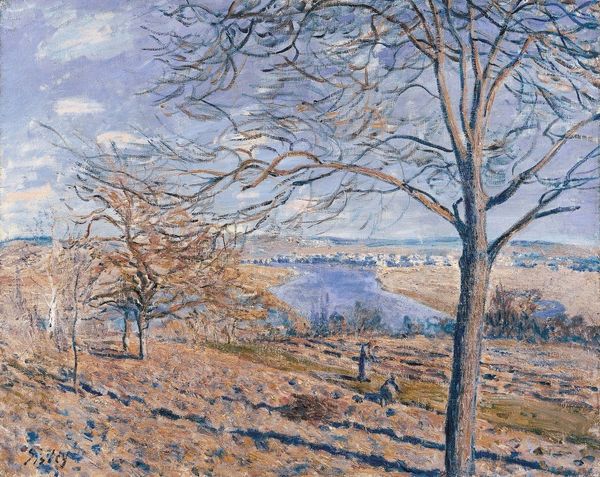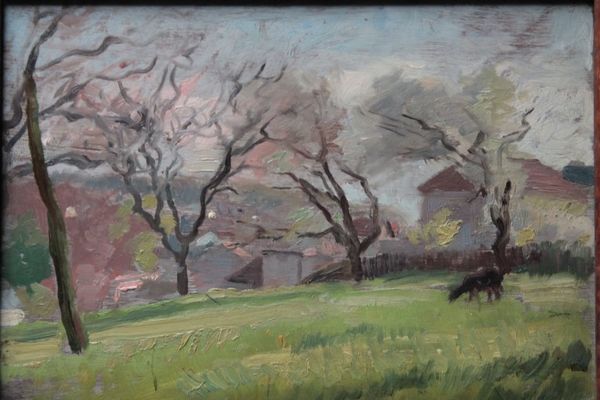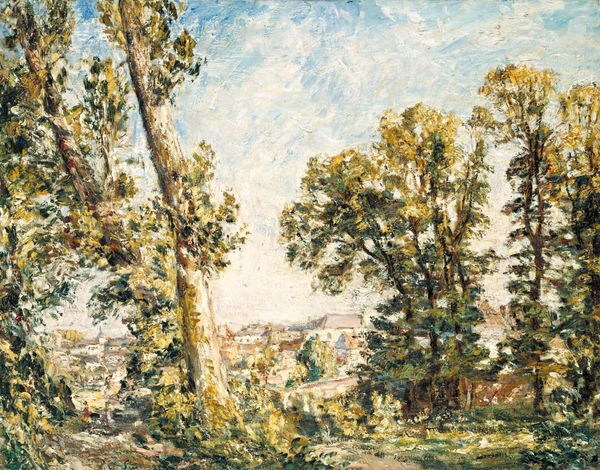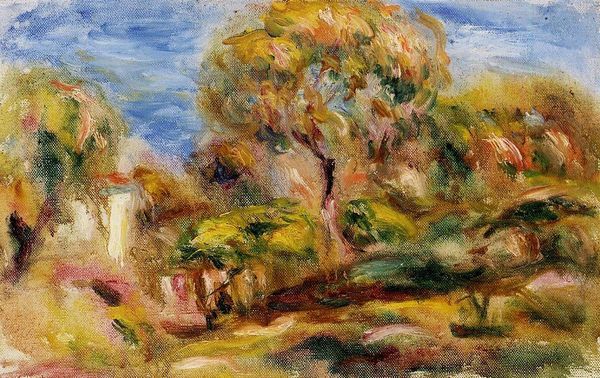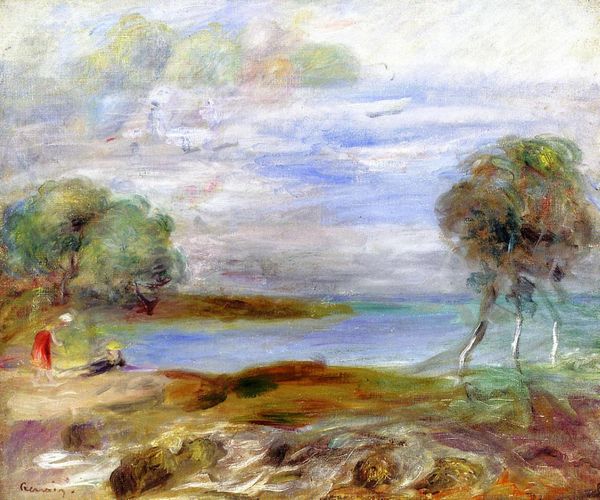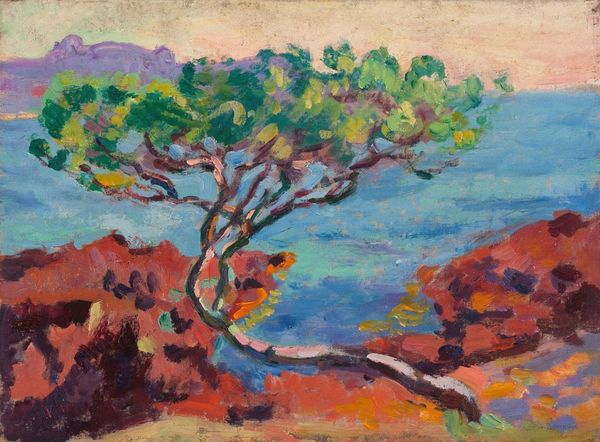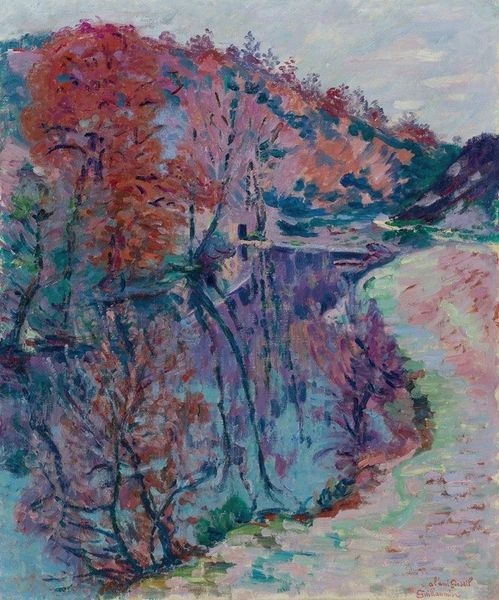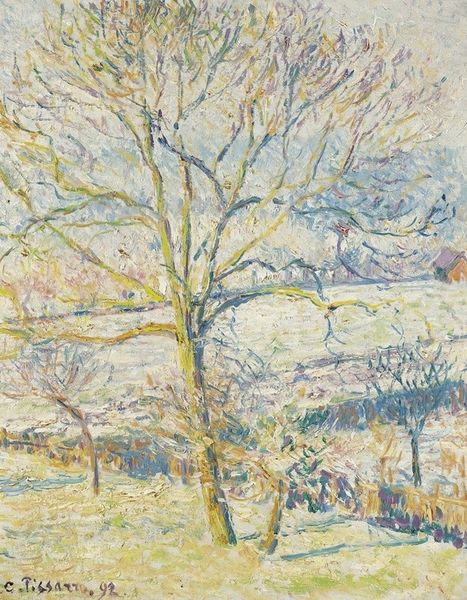
Copyright: Samuel Mutzner,Fair Use
Editor: So, this is "Springtime" by Samuel Mutzner, created in 1930, an oil painting with a hazy quality to it. What do you see in this piece beyond a simple landscape? Curator: I see more than just trees. I perceive the promise of rebirth and renewal encoded in its rosy hues. Notice how the light catches the tips of the branches, suggesting an awakening. It’s not just a season, but a state of mind. Can you sense how the symbols operate on multiple levels here? Editor: It definitely evokes a sense of hope, but how can we be sure that these symbolic meanings were intentionally included in the piece? Curator: That’s where the power of observation and cultural understanding come in. In many traditions, the blossoming tree is deeply tied to notions of fertility, life, and the ephemeral nature of beauty. Mutzner, consciously or unconsciously, tapped into a rich visual language. Does this resonance change how you view the painting? Editor: Absolutely. Knowing about that symbolism makes the work feel deeper, like it’s participating in a longer, ongoing conversation about life cycles. Curator: Precisely! The artwork becomes less about the mere representation of a scene, and more about its resonance as an emotional and cultural touchstone, linking us to generations past and visions of the future. What are you taking away from this experience? Editor: I will start by considering all art as a form of communication using symbols as words or part of a visual language.
Comments
No comments
Be the first to comment and join the conversation on the ultimate creative platform.
